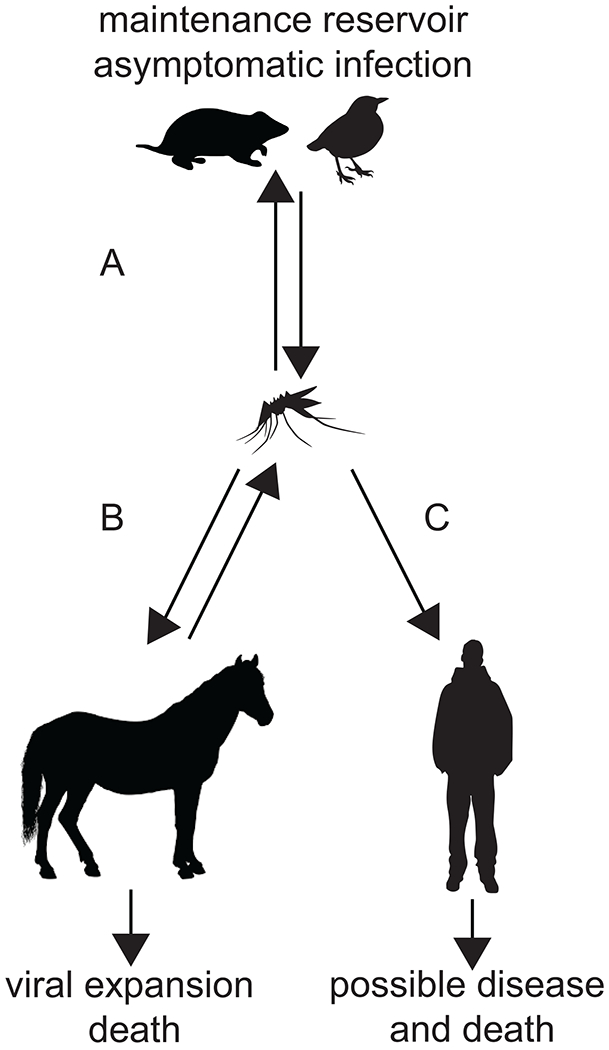Figure 1.

The transmission cycle of encephalitic alphaviruses. A) Alphaviruses are maintained in nature by cycling between a host species, typically a bird or small mammal, and a mosquito vector species. B) Spillover events often occur into livestock, which reach high viral titers and readily transmit the virus to additional vectors. In the case of the New-World viruses this infection almost always leads to death27. C) Typically, after infection of livestock, humans that work in close association with these animals can also be infected by vector species. Humans are regarded as dead-end hosts for most alphaviruses. In humans these infections may lead to disease, and, in severe cases, death.
